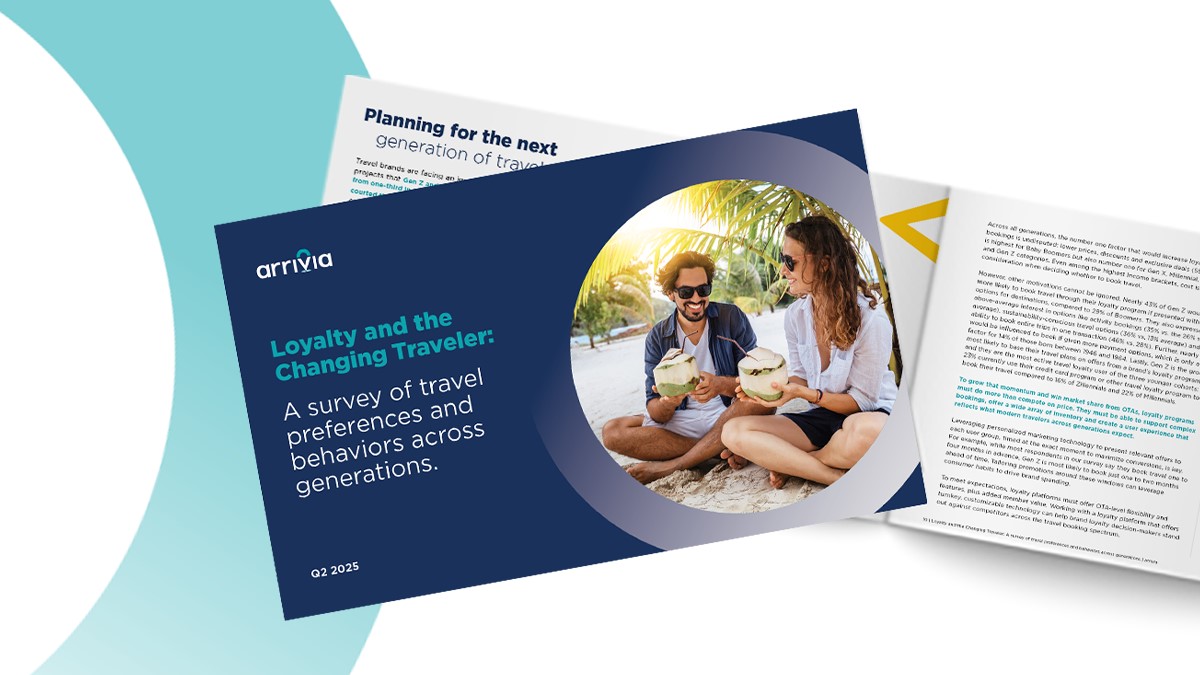In business, you’re only as good as the company you keep. For travel, hospitality, and retail groups, the same goes for your loyalty program. While independent loyalty perks may have been enough to engage customers in the 2010s, the increasingly competitive loyalty environment — paired with progressively higher customer standards — has necessitated expanding loyalty ecosystems.
Enter the role of loyalty program partnerships. Strategic alliances in loyalty programs create a broader array of rewards that expand your customer base and enhance the value you offer members, boosting the public perception of your brand. Discover the top benefits of loyalty program partnerships with tips to identify and structure collaborations with potential partners.
Expanding Loyalty Programs Through Partnerships
A loyalty ecosystem refers to a network of brands collaborating within an interconnected system to improve member experiences and increase customer value in loyalty programs. Partnerships help advance traditional loyalty programs, which are typically organized by one brand, into comprehensive solutions that offer members a broader and more diverse collection of benefits.
Compared to a coalition loyalty program, in which brands from across loyalty markets join forces to create a more transactional earn-and-burn rewards structure, loyalty program partnerships enable multiple brands to offer customers both financial and experiential benefits. Experiential rewards, which can take the shape of early access or exclusive events, are in increasingly high demand.
So, how do loyalty program partnerships enhance customer value? Cross-industry loyalty alliances, such as strategic partnerships between travel and finance brands or retail and hospitality groups, unlock a new layer of reward diversification for customers. The more diverse and in-demand rewards a loyalty ecosystem can provide, the more of the customer wallet share it can capture.
Benefits of Strategic Partnerships in Loyalty Programs
Now that we’ve explored what characterizes a loyalty ecosystem, what benefits do partnerships bring to loyalty programs? On the operational side, loyalty program partnerships enable broader access to consumer data and enhanced cross-marketing opportunities. Increased data access allows separate brands to collaborate to create cohesive rewards that are personalized to each customer.
Likewise, a loyalty ecosystem facilitates more attractive reward diversification — especially experiences — than a single company could offer. And can strategic partnerships help reach new customer segments? You bet they can. Brand exposure through partnerships is one of the key benefits of loyalty partnerships, helping to expand customer base across industries.
Identifying Potential Loyalty Program Partnerships
So, what are the critical elements of a successful loyalty partnership? Time-tested criteria for strategic alliances in loyalty programs include shared customer demographics to ensure the ecosystem is mutually beneficial. Similarly, there must be compatibility between each company’s business model and objectives, particularly alignment with brand values, to establish a cohesive reward structure.
One of the best ways to gauge potential partners for expanding loyalty ecosystems is to create a Request for Proposals (RFP). This document allows you to define your program expectations and solicit proposals from potential partners. This process will enable prospects to send ideas for potential collaborations and sets clear standards for demographics, service offerings, and brand values.

Best Practices for Forming and Maintaining Partnerships
When structuring loyalty program partnerships, the emphasis must be on mutual benefit and long-term success. Your loyalty ecosystem must be designed to offer ongoing value to all involved, so clear agreements must be made on loyalty currency value, available rewards, and reward redemption and how program transactions will be processed, including shared loyalty technology.
Once strategic alliances in loyalty programs have been made, it’s vital to maintain open communication to enhance the ecosystem. Measuring partnership success will rely on key performance indicators (KPIs), including but not limited to:
- Redemption rate is a metric to gauge how many points are redeemed for rewards across the loyalty ecosystem within a set period compared to the total number of points issued within that period, focusing on redemption frequency.
- Reward preference is a means of monitoring redemption behavior to understand which perks are most appealing to loyalty ecosystem members. It specifically determines which demographics prefer experiential to financial perks.
- Net Promoter Score (NPS) is a means to monitor customer loyalty and advocacy, in which program members rate their likelihood of recommending the loyalty ecosystem to their family or friends on a scale of 0 to 10.
- Churn rate measures the number of program members who opted out of the loyalty ecosystem over a set period. It is calculated by dividing the number of lost members by the number of total members at the start of the period and multiplying by 100.
Future Trends in Loyalty Program Partnerships
The above section mentioned how shared loyalty technology is involved in structuring loyalty program partnerships. Well, how does technology affect the formation and management of loyalty partnerships? The technological impacts on loyalty programs are vast, with shared tech enabling easier data sharing and integration and simplifying consumer access to expanding loyalty ecosystems.
Arrivia Chief Marketing Officer, Jeff Zotara, explains it best: “The best way to build a rewards program that incentivizes customers to interact with it is to leverage technology that gathers data-driven insights and crafts bespoke engagement strategies.” In this regard, technology like blockchain and artificial intelligence (AI) are actively shaping the future of loyalty programs.
With technology like blockchain to interconnect dispersed loyalty programs and AI to gather individual customer insights and personalize loyalty rewards, program partners can facilitate a more convenient loyalty ecosystem with more relevant rewards experiences. Plus, with technology simplifying how members earn and access their rewards points, it can improve general satisfaction.
Explore Loyalty Program Partnerships with arrivia
Strategic alliances in loyalty programs are powering a new era of loyalty rewards, one that is not only enhancing loyalty program value but also enabling brands to reach new audiences. When striving to forge loyalty program partnerships that benefit both you and your customers, turn to the loyalty experts at arrivia, trusted providers of turnkey travel technology and flexible rewards.
With arrivia as your partner, you can offer bespoke travel loyalty rewards, vacation gift cards, and once-in-a-lifetime travel itineraries, complete with in-house marketing services. Explore all arrivia services today to begin expanding your loyalty ecosystem.



